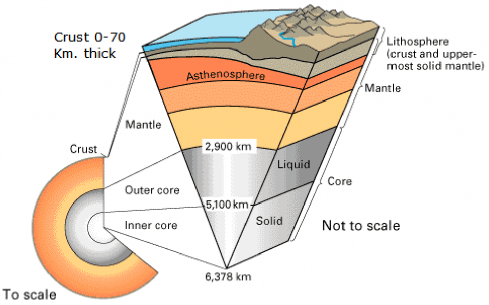Fig4: Shadow Zones Fig 5: Earthquake
3. Structure of the Earth’s Interior
The earthquake waves undergo changes at definite intervals during their propagation through the interior of the earth. They also undergo the action of reflection and refraction. Places on earth where seismic waves are not recorded are called “shadow zones”. S-waves are not recorded beyond 103o angular distance from focus which indicate that outer core of earth is in molten or semi-molten in which S-waves cannot propagate. As P-waves are not recorded between angular distances of 103o to 142o, it indicates that the core has different density, state and composition.
From the analysis of the behavior of these waves it is clear that the interior of the earth has a layered structure of different densities.
With the help of earthquake waves, we can get the information about the exact location of the layers, their depth, thickness and other physical and chemical properties. Based on the passage of these waves through different types of rocks and their behavior we can conclude that the earth’s interior has three main layers. These three layers are: (i) Crust, (ii) Mantle and (iii) Core. This arrangement can be compared to that of a boiled egg.

